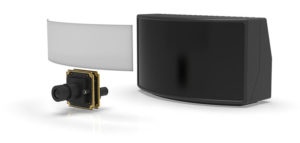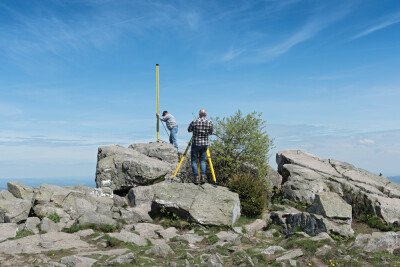The autonomous vehicle perception system market just got a little bigger: Sense Photonics has announced that they are entering the field in an attempt to produce the most efficient lidar using a new âflashâ lidar architecture with a unique curved design.
By now, news regarding the potential for lidar technology to help autonomous vehicles and robotics to become aware of their surroundings is far from surprising. Although some do not agree with using lidar for autonomous vehicles, the increasing number of players in the industry and proliferation of lidar technology developed in the last few years are indicative of how the field is evolving. Although the possibilities of success for any single company starts to shrink as more companies join, it seems thereâs still room for a company who can find new and novel ways to take advantage of lidar technology.
Sense Photonicsâ new prototype lidar looks similar to other sensors already available in the market, but its curved design allows for a 90-degree vertical, and a 180-degree horizontal field of view. These are numbers that we havenât seen before from non-360-degree lidar sensors. It also uses a unique solid state âflashâ architecture (with no moving parts) that enables high resolution across horizontal and vertical fields-of-view without compromising on frame rate.

The curved design of the Sense Photonics lidar.
Its small size also lends itself well to vehicular and robotic applications. The company has developed a âmodular lidar architectureâ which allows separating the emitter from the receiver, to make it easier for manufacturers to integrate the sensor seamlessly and elegantly on a vehicle. According to the companyâs press release, âthis avoids the need for unsightly lidar elements protruding from the vehicle while maintaining coverage of the entire field of viewâ.
Similarly to other lidar solutions, Photonicsâ sensor is capable of generating 3D point clouds, but it also natively outputs 2D depth images without the need for additional processing, enabling easy integration with high-resolution RGB data. The technology can also capture intensity data like a near infrared camera, producing monochromatic images that are spatially and temporally correlated with the 3D data. This type of data can help with the development of deep learning algorithms for standard cameras, and address situations where standard cameras fail, for example, due to less than ideal lighting conditions.
For this sensor, like others, working outdoors in bright sunlight, in the dark, or in the presence of multiple lidar systems, isnât an issue because the sensor includes ambient light suppression and interference mitigation.
The idea behind the integration of lidar with an autonomous vehicle is to provide high accuracy and precision in object detection and recognition in Advanced Driver Assistance Systems (ADAS). By featuring a wider field of view and improved data collection algorithms, this new solid-state lidar sensor detects more of its surroundings, therefore creating a safer automated driving experience, without sacrificing cost or performance requirements.
Based in Durham, North Carolina, Sense Photonics is a technology startup building a new solid-state lidar system for autonomous vehicles, industrial robotics, environmental monitoring and other applications. Recently, the company received a $26 million Series A funding round co-led by Acadia Woods and Congruent Ventures, with participation from a few other investors.
With the $26M investment, Sense Photonics plans to announce the first products over the next few months, and to ramp up their production.






